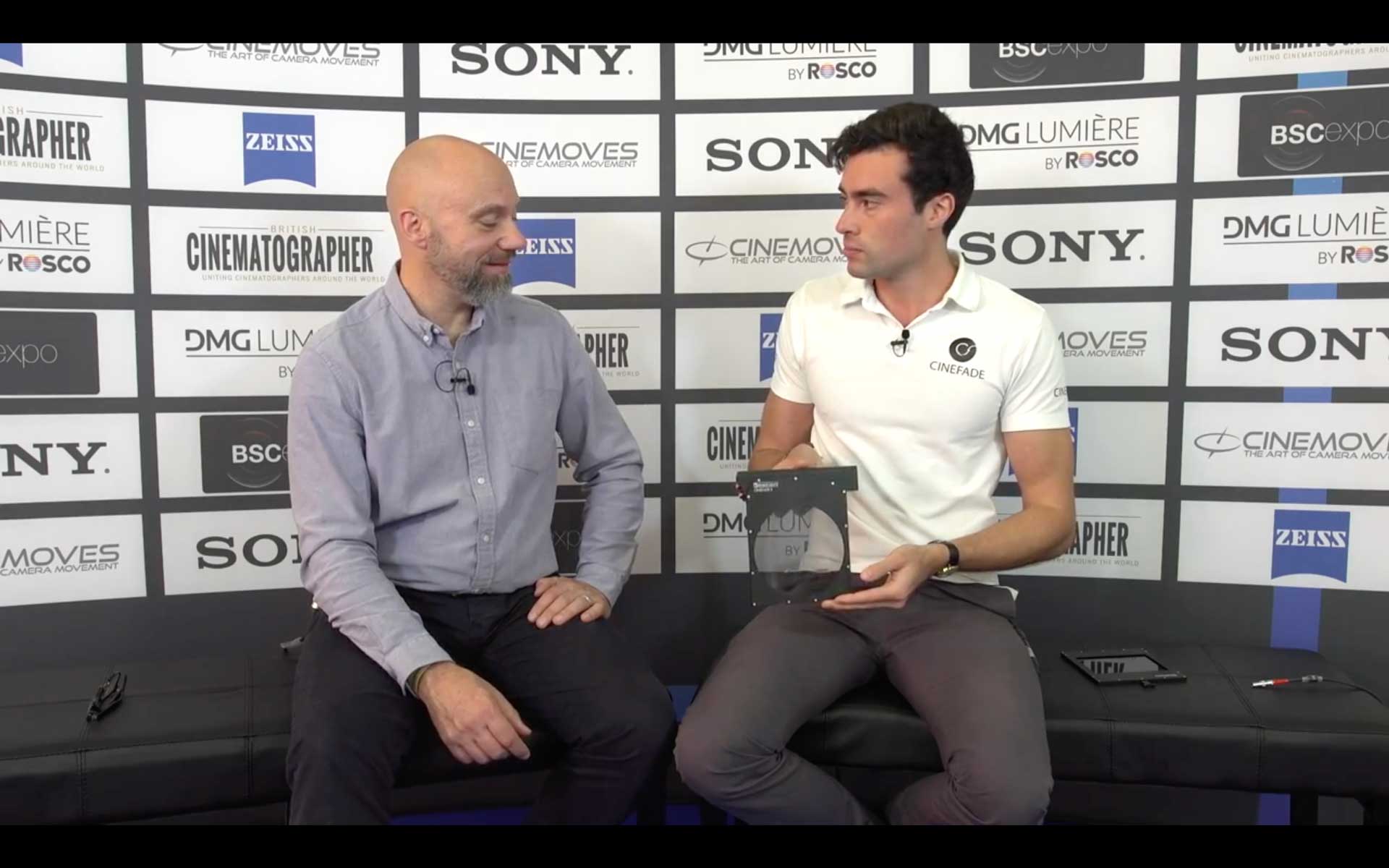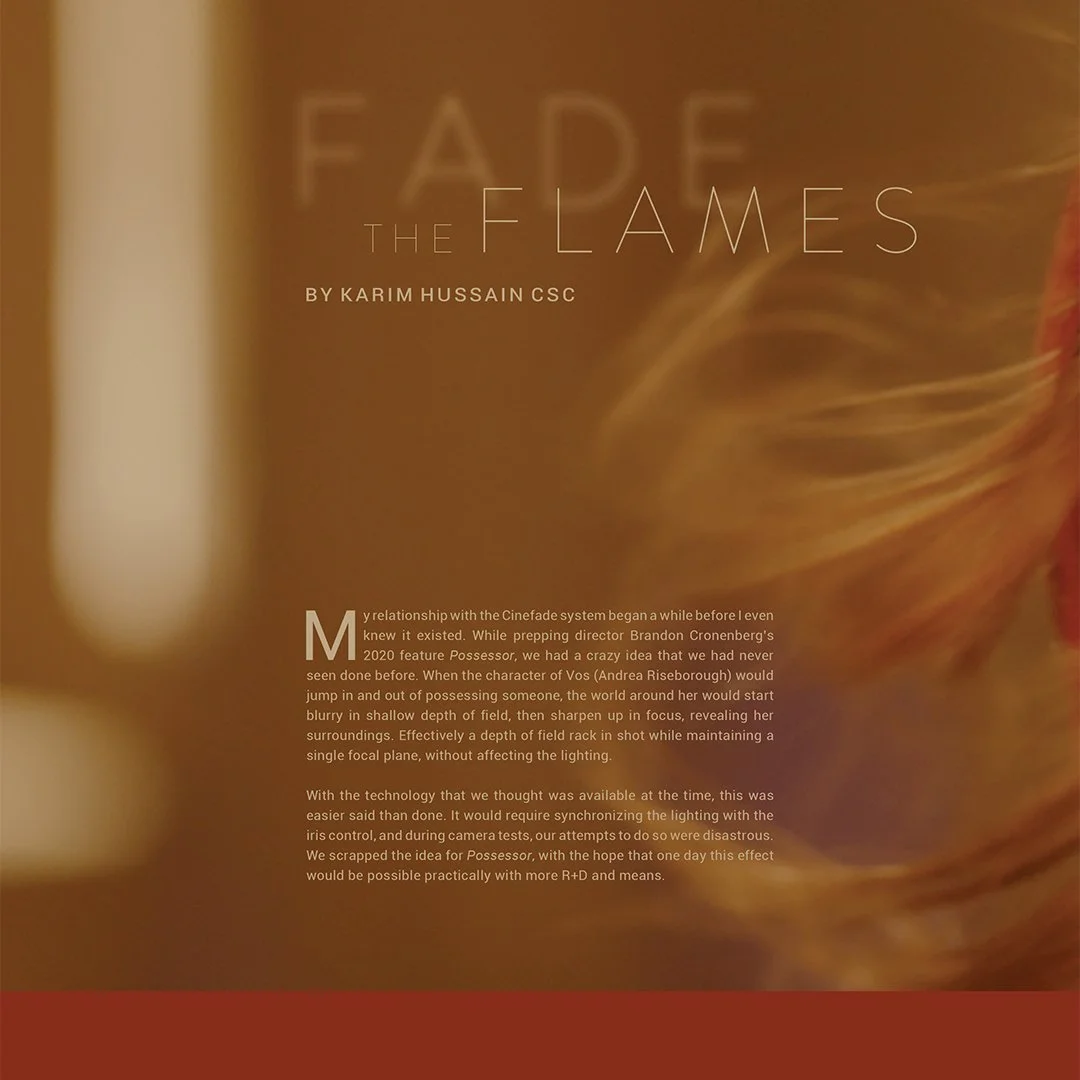My relationship with the Cinefade system began a while before I even knew it existed. While prepping director Brandon Cronenberg’s 2020 feature Possessor, we had a crazy idea that we had never seen done before. When the character of Vos (Andrea Riseborough) would jump in and out of possessing someone, the world around her would start blurry in shallow depth of field, then sharpen up in focus, revealing her surroundings. Effectively a depth of field rack in shot while maintaining a single focal plane, without affecting the lighting.
Read MoreShooting on Sony Venice Cameras at 6K 17:9 with the new large format Leitz Prime lenses, the Cinefade enables Director of Photography Balazs Bolygo BSC, HSC to transition from a very shallow depth of field at T1.8 to a deep depth of field at around T8, a Cinefade of more than 4 stops. In the end, two distinct scenes made it into the final cut…
Read MoreIn the past, Cinematographers have always been limited to choosing a depth of field that stays consistent throughout the shot. A variable depth of field that creates a sort of focus blur or background blur effect has vast creative applications and the potential of becoming a must-have feature for Lens Control Systems (LCS).
Read MoreDavid wanted to gradually transition from a deep depth of field to a shallow depth of field in one shot to blur the background and isolate the foreground subject. This draws attention to the depth of field effect and communicates to consumers the capabilities of the P10 phone and the artistic value that the feature offers.
Read MoreThe novel Cinefade system synchronises the external iris motor of a professional camera system with a light transmission filter to vary depth-of-field in film.
The same light transmission filter can also be used individually as a motorised variable ND filter that is remotely controlled by a cmotion lens control system to allow for precise and fast exposure changes when the camera is inaccessible or when the creative brief calls for an exact T-stop to maintain a consistent depth-of-field.
Our Motorised Polariser can be used independently as a RotaPola that is automatically calibrated, allows users to set marks and can be controlled remotely, which sets it apart from similar products such as the Tiffen Multi Rota Tray or ARRI’s Rota Pola frame.
Read MoreThe Cinefade shot is often compared to the Dolly Zoom shot, also known as the Vertigo effect, Trombone shot, Zolly amongst many others. Although it is technically different, the comparison refers to the narrative motivation behind applying one of the two shots in a film: Accentuating a pivotal moment in the narrative.
Read MoreThe cmotion Cinefade VariND is made up of a Motorised Polariser and a Static Polariser which when combined can be used as a motorised variable ND filter that is remotely controlled by a cPRO lens control system to allow for precise and fast exposure changes when the camera is inaccessible or when the creative brief calls for an exact T-stop to maintain a consistent depth-of-field, even in changing lighting conditions.
Read More“Director Jaume Collet-Serra and I wanted a severe depth-of-field shift to accentuate Liam Neeson's experience - something to isolate him from his surrounding world. I was in the process of designing a system when my A-camera first AC, Dave Cozens, came upon Cinefade. It was exactly what we were looking for.”
- Paul Cameron ASC
Read More




























